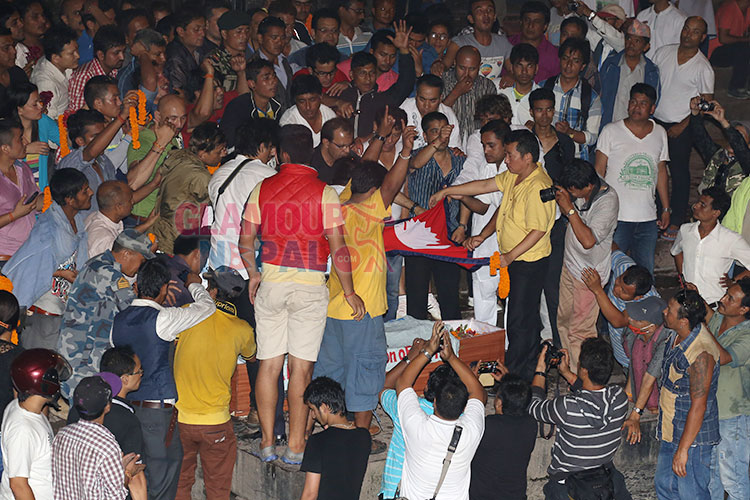

Licchavis of Vajji, Kosala, and Malla (I)) that arrived at different periods eventually merged with the local population by adopting their language and customs.

Indo-Aryan tribes like the Licchavis, Kosala, and Mallas (N) from respective Indian Mahajanapada (i.e. Newar community within it consists of various strands of ethnic, racial, caste and religious heterogeneity, as they are the descendants of the diverse group of people that have lived in Nepal Mandala since prehistoric times. Unlike other common-origin ethnic or caste groups of Nepal, the Newars are regarded as an example of a nation community with a relict identity, derived from an ethnically-diverse, previously-existing polity.

The Kathmandu Valley and surrounding territories constituted the former Newar kingdom of the Nepal Mandala. Nepal's 2011 census ranks them as the nation's sixth-largest ethnicity/community, with 1,321,933 Newars throughout the country. Today, they consistently rank as the most economically, politically and socially advanced community of Nepal, according to the annual Human Development Index published by UNDP. Newars are known for their contributions to culture, art and literature, trade, agriculture and cuisine. Newars have continued their age-old traditions and practices and pride themselves as the true custodians of the religion, culture and civilisation of Nepal. Newars have developed a division of labour and a sophisticated urban civilisation not seen elsewhere in the Himalayan foothills. Newars form a linguistic and cultural community of primarily Indo-Aryan and Tibeto-Burman ethnicities following Hinduism and Buddhism with Nepalbhasa as their common language. Newar ( / n ɪ ˈ w ɑːr/ Newar: नेवार, endonym: Newa Newar: नेवा, Pracalit script: 𑐣𑐾𑐰𑐵𑑅) or Nepami, are the historical inhabitants of the Kathmandu Valley and its surrounding areas in Nepal and the creators of its historic heritage and civilisation. Kirati Peoples Maithils Pahadi people other Indo-Aryan peoples Tibeto-Burman speakers


 0 kommentar(er)
0 kommentar(er)
